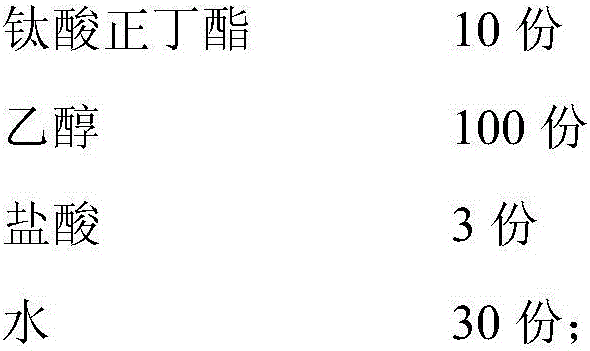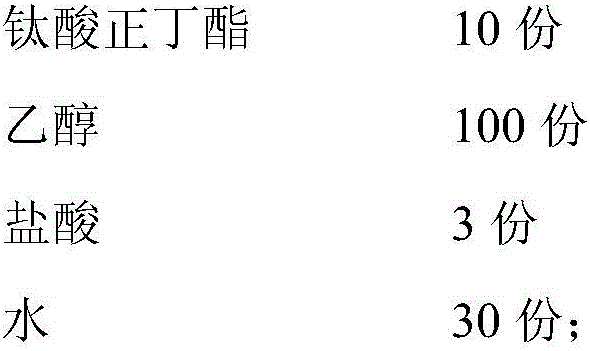Method for treating VOCs waste gas in petrochemical industry through normal-temperature high-efficiency catalytic degradation
A catalytic degradation and petrochemical technology, which is applied in the direction of chemical instruments and methods, separation methods, physical/chemical process catalysts, etc., can solve the problems of complex structure of catalytic reaction tower, unfavorable popularization and application, and large energy consumption, so as to reduce reaction activation Energy, avoid agglomeration, long service life
- Summary
- Abstract
- Description
- Claims
- Application Information
AI Technical Summary
Problems solved by technology
Method used
Image
Examples
Embodiment 1
[0034] The steps of waste gas produced in the present invention's control of petroleum refining process are as follows:
[0035] (1) The exhaust gas enters the first spray tower from the bottom, and in the first spray tower, it collides with the alkaline spray liquid sprayed from top to bottom, and the acid components in the spray liquid and the exhaust gas form salt, and dust is collected, discharged from the bottom of the first spray tower, and the treated waste gas is discharged from the top of the first spray tower;
[0036] (2) The exhaust gas discharged from the first spray tower enters the second spray tower from the bottom, and collides with the spray liquid sprayed from top to bottom in the second spray tower to dissolve the soluble components in the exhaust gas A solution is formed, the solution is discharged from the bottom of the second spray tower, and the waste gas after spraying treatment is discharged from the top;
[0037] (3) The exhaust gas discharged from ...
Embodiment 2
[0057] The difference between this embodiment and Embodiment 1 is: CeMnO 3 / TiO 2 @@SiO 2 The specific preparation process conditions of the catalyst are different. Specifically:
[0058] The rotating speed of stirring in the step a is 450r / min; Nanoscale CeMnO in the step b 3 / TiO 2 MediumCeMnO 3 The mass load of the mass loading is 6%; the wavelength of ultraviolet light in step c is 240nm; the time of the hydrothermal reaction in step c is 8h in step d, the carbon layer thickness is 3nm, and the carbon layer accounts for the nanometer CeMnO after coating 3 / TiO 2 4% of the total mass of the catalyst; the silicon layer accounts for the CeMnO after coating in step e 3 / TiO 2 30% of the total mass of the catalyst.
Embodiment 3
[0060] The difference between this embodiment and Embodiment 1 is: CeMnO 3 / TiO 2 @@SiO 2 The specific preparation process conditions of the catalyst are different. Specifically:
[0061] The rotating speed of stirring in the step a is 600r / min; Nanoscale CeMnO in the step b 3 / TiO 2 MediumCeMnO 3 The mass load of the mass loading is 8%; the wavelength of ultraviolet light in step c is 275nm; the time of hydrothermal reaction in step c is 10h in step d, and the thickness of carbon layer is 4nm, and carbon layer accounts for nanometer CeMnO after coating 3 / TiO 2 5% of the total mass of the catalyst; the silicon layer accounts for the CeMnO after coating in step e 3 / TiO 2 40% of the total mass of the catalyst.
[0062] Using the above method, the comparison of VOCs before and after treatment in petrochemical plants, the results are shown in the table below:
[0063]
[0064] It can be seen from the comparison of the VOCs content before and after the treatment that...
PUM
| Property | Measurement | Unit |
|---|---|---|
| thickness | aaaaa | aaaaa |
| particle diameter | aaaaa | aaaaa |
| thickness | aaaaa | aaaaa |
Abstract
Description
Claims
Application Information
 Login to View More
Login to View More - R&D
- Intellectual Property
- Life Sciences
- Materials
- Tech Scout
- Unparalleled Data Quality
- Higher Quality Content
- 60% Fewer Hallucinations
Browse by: Latest US Patents, China's latest patents, Technical Efficacy Thesaurus, Application Domain, Technology Topic, Popular Technical Reports.
© 2025 PatSnap. All rights reserved.Legal|Privacy policy|Modern Slavery Act Transparency Statement|Sitemap|About US| Contact US: help@patsnap.com



